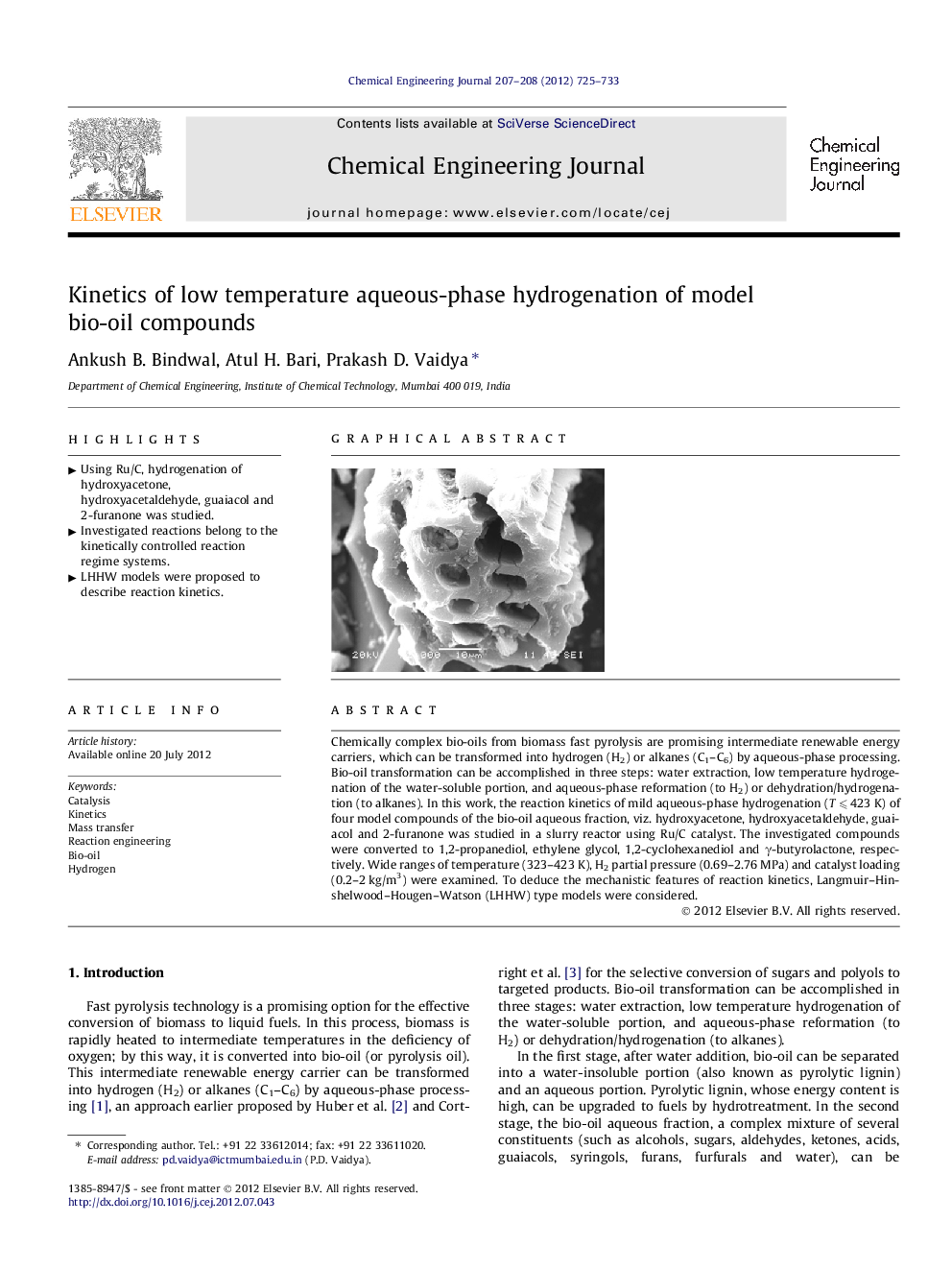| Article ID | Journal | Published Year | Pages | File Type |
|---|---|---|---|---|
| 149471 | Chemical Engineering Journal | 2012 | 9 Pages |
Chemically complex bio-oils from biomass fast pyrolysis are promising intermediate renewable energy carriers, which can be transformed into hydrogen (H2) or alkanes (C1–C6) by aqueous-phase processing. Bio-oil transformation can be accomplished in three steps: water extraction, low temperature hydrogenation of the water-soluble portion, and aqueous-phase reformation (to H2) or dehydration/hydrogenation (to alkanes). In this work, the reaction kinetics of mild aqueous-phase hydrogenation (T ⩽ 423 K) of four model compounds of the bio-oil aqueous fraction, viz. hydroxyacetone, hydroxyacetaldehyde, guaiacol and 2-furanone was studied in a slurry reactor using Ru/C catalyst. The investigated compounds were converted to 1,2-propanediol, ethylene glycol, 1,2-cyclohexanediol and γ-butyrolactone, respectively. Wide ranges of temperature (323–423 K), H2 partial pressure (0.69–2.76 MPa) and catalyst loading (0.2–2 kg/m3) were examined. To deduce the mechanistic features of reaction kinetics, Langmuir–Hinshelwood–Hougen–Watson (LHHW) type models were considered.
Graphical abstractFigure optionsDownload full-size imageDownload as PowerPoint slideHighlights• Using Ru/C, hydrogenation of hydroxyacetone, hydroxyacetaldehyde, guaiacol and 2-furanone was studied. • Investigated reactions belong to the kinetically controlled reaction regime systems. • LHHW models were proposed to describe reaction kinetics.
